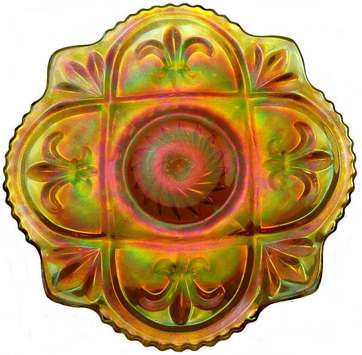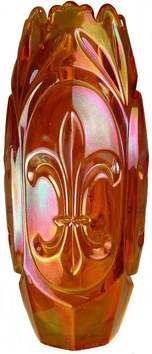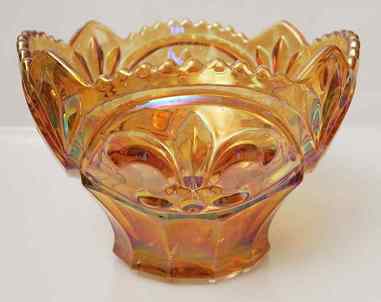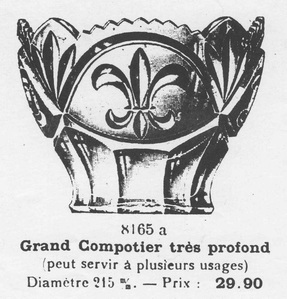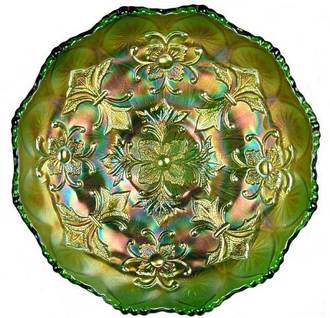Collectors Facts - Fleur de Lys, Inwald (originally "Sigurd"), and Millersburg
|
Shapes (Inwald):
Chop plate - 10"
Plate - 6" and 9"
Vases - 6.25", 8", 10", 13"
Bowls, various sizes
Pitcher
Jardiniere
Comport (see below)
|
Colours:
Marigold
Marigold
Marigold
Marigold
Marigold
Marigold
Marigold
|
Recent discovery!
Thanks to Dirk Dreps for sending us this picture (below left) of a shape that had not previously been reported in Inwald's Fleur de Lys pattern.
We found it in a 1927 Markhbeinn catalogue (showing Inwald's glass), as shown on the right: the shape was called a "Grand Compotier très profond" (a large, deep comport / bowl). It was also described as being for multi-purpose usage.
Thanks to Dirk Dreps for sending us this picture (below left) of a shape that had not previously been reported in Inwald's Fleur de Lys pattern.
We found it in a 1927 Markhbeinn catalogue (showing Inwald's glass), as shown on the right: the shape was called a "Grand Compotier très profond" (a large, deep comport / bowl). It was also described as being for multi-purpose usage.
|
The motif crossed the Atlantic Here we have very different pieces, from two very different makers, that share the same pattern name, based on the same symbol, the fleur-de-lys. The fleur-de-lys is a stylised lily flower and its use as an emblem is said to be traceable back to as early as 493AD. One historical interpretation is that its three leaves represented the three main social classes of that time – those who worked, those who fought, and those who prayed. By the 12th Century it was being used as an heraldic emblem by the Kings of France, and over the centuries, it appeared on many European coats of arms and flags. The fleur-de-lys also crossed the Atlantic to America with European settlers (especially from France) who were bound for the New World, and it can be found on coats of arms and flags in both the USA and Canada (Source: Wikipedia). How fitting then that the emblem which spans Europe and the USA was also used as a Carnival Glass design by glass makers on both sides of the Atlantic – by Inwald in Czechoslovakia and by Millersburg in the USA – and used to stunning effect as these pictures show. See more Collectors Facts |
